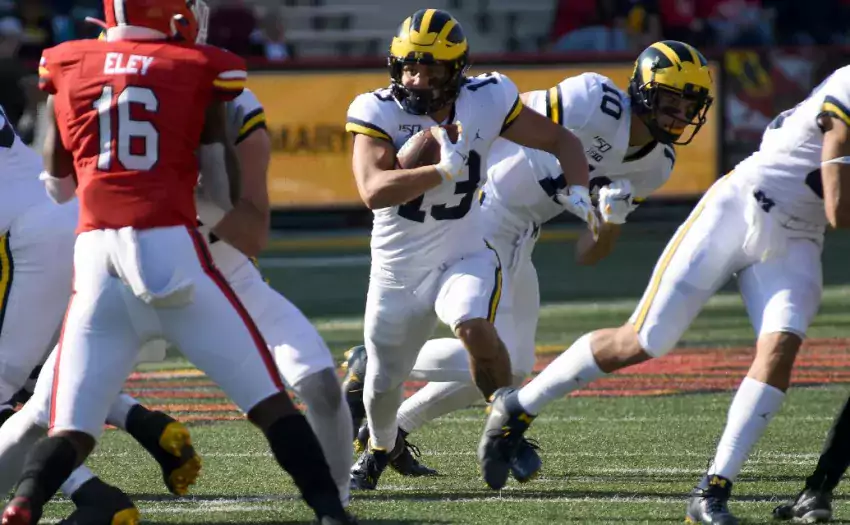
Neck Sharpies: The Backside of Pin and Pull

I know Brian and many of my other peers are against this, but I like the "Truuuuuuu!" cheer. Sure it's simple, and not at all unique—I learned it as a kid as "Louuuuuuuu" when Whitaker came to bat. But simple cheers are also those that can get a high level of participation, which is key to unlocking one of my favorite fandom achievements in sports: The audible road takeover:
Let's see how we got here:
The Backside of Power
After putzing around doing a ton of things in the first few games, Michigan used Rutgers to simplify, going back to the Arc/Split Zone and Pin & Pull base we've been talking about since Warinner installed it last year. Since then they've been thickening these parts of the playbook.
When you can concentrate on a base running play you can do more than just open up counters to it. You can start building on-the-fly adjustments into the play itself to torture opponents who practiced for it, see it, react to it in a way that should be advantageous for them, and then get put to the wrong side.
We got a great example of this from Michigan's Power-O running game against Rutgers 2017. This was the third year under Harbaugh and Drevno, who made this their base running play at San Diego, then Stanford and San Francisco. Rutgers thought they could attack this by slanting the defensive line to playside all the time, screwing up all the intended downblocks and delivering a meaty tackle into the intended gap:
Here's an example of this—just with the RT and the LG switching jobs. The guy you're paying attention to is the backside tackle, who ruins this play despite Juwan Bushell-Beatty ejecting the tackle on the playside.
So Harbaugh/Drevno figured out a way to punish this behavior. In the second half Michigan was zone blocking that backside DT instead of blocking down on him. If he tried to slant towards the power gap, center Mason Cole let him, sealed him there, and laughed as the cable subscribers got gashed with cuts behind that.
So how how is this relevant to 2019 Maryland? Well Harbaugh/Gattis are now doing the same thing with Pin & Pull.
[After the JUMP: Backdoors]
-----------------------------------------------
Messing with Pin & Pull
By now we're familiar with how Pin & Pull works:
- Pin any and all frontside defenders set up inside of your frontside blockers.
- Kick out the edge defender with your first available puller.
- Provide a lead block by pulling the first
Because Michigan runs it so often defenses are starting to gameplan for it. How do you stop an outside run? Well, don't get pinned inside. Notre Dame was putting extra defenders on the edge to give Michigan nobody to block down on. Maryland had a simpler response: slant. But since we're attacking the edge now the slanters are the linebackers. See if you can follow as things fall apart here:
- McKeon is tasked with blocking down on the MIKE.
- Bredeson is supposed to kick out that hybrid SAM.
- Onwenu is supposed to pull and thwack the WLB.
The defenders were all a gap over. All the way down the line. But they didn't get that way off the snap. Only after they saw the pin & pull action did everybody seem to re-gap, the only replacement being the hybrid OLB gets flipped for the safety coming down. If it's indeed a sight read for Maryland, it both makes sense and is a clever response to those pullers: fight flanking maneuver with flanking maneuver.
Messing with Messers
The Tru run was doing to the Maryland "slant" what they did two years ago to the Rutgers slants with Power, essentially zone blocking the slanters and then cutting back against over-pursuit.
It begins innocuous enough: just one more of Michigan's base running play. However shortly after the snap those down blocks are all in danger (except Ruiz's perhaps). McKeon's guy slanted across him to such a degree he's now touching the guy Bredeson was going to be kicking out. That gap where you can barely see McKeon's helmet is the gap Pin & Pull naturally attacks.
It may seem like Runyan has an angle to make a new gap but that DT is anchored and has his right hand on Runyan's shoulder pad. A second later that guy is going to be playside of the tackle who started a solid gap over.
But you can already see McKeon has converted his block to a kickout, sealing #4 outside. Runyan is about to do the same. Even Hayes coming down from the backside, who had no chance of cutting off a fleet-footed modern linebacker, is in a quite advantageous position to pin that dude outside. Onwenu doesn't even have to block that guy, nor the safety, because they're both so preoccupied with not getting flanked they're flunking lane integrity. He settles for helping Runyan so when that DT spins off to pursue there's another OL in the way. Tru reads all this and cuts.
YOU get a kickout! YOU get a kickout! YOU get a kickout! The only tough block is Cesar Ruiz has to seal the backside DT, who doesn't make it easy, but neither is that guy expecting to do much on this play than make a good show of engaging with the center for his film session later. By getting upfield instead of playside of Ruiz, that DT is now in the way of the one guy with any chance of making this play: the backside end who crashed after Patterson pulled.
The thing is I'm pretty sure this is done on the fly, i.e. it's baked into how Michigan runs Pin & Pull now. If you're trying to slant your way into not getting flanked, now you have to worry about getting stuck out there, watching helplessly as your enemies occupy the ground you just abandoned, to the tune of many u's.
This Goes Both Ways
This wasn't the only such adjustment on the fly. We're already familiar—from such plays as Illinois Doesn't Believe in Edge Defense I, and IDBIED II, etc. On those plays Michigan's kickout puller was finding a guy shuffling on the edge to avoid getting kicked, so our puller just buried the guy and ran outside instead. Last week we even talked about how that can be sound defense if your linebacker replaces that guy (it's called playing to spill). But the more defenses prepare for Pin & Pull and its flipped version, Counter Trey, the more defenses are going to throw linemen where they don't belong.
Take this play from the end of the 1st half. It's Counter Trey in every way except instead of kicking the SAM with their puller, you kick that guy with your OT like you would on power, and the whole play moves inside one gap. I'm using the old 1970s Nebraska terminology for when that happens so now it's Deuce.
Except Maryland bought the setup which looks so much like Michigan's favored Pin & Pull alignment, and switched to a slant. Note #5 at the top of the line of scrimmage hollering at everybody. I would bet you all the D.C. metro area cable subscribers that he was checking to a slant before the snap. He doesn't get what he was expecting, but they do very much slant, and that causes issues.
The response is the same as it was when Illinois did this on the edge. The DT (#59) slants inside where Bredeson's kick is just going to result in a wad of bodies, so Bredeson turns him inside:
And Eubanks pops outside of that as the new kicker:
And we're back in business.
No doubt Michigan State is putting more time than Maryland into drilling their response to Michigan's pin & pull games. And coming off the bye, I'm way more interested to see what minute adjustments Michigan has prepared that I am for any clever #SpeedInSpace additions. Not that I mind them.
A SpeedInSpace Addition
Yes, sorry this is getting long, but I had to save this play from a trashed Sharpies on how Maryland and Michigan were running a lot of the same things. It's Pin & Pull, with that old spring trick of using the quarterback as a runner, and throwing the running back out there as a lead blocker. Really, a second kicker:
Michigan has two tight ends and six offensive linemen (Ryan Hayes is wearing 80; I represented him as "76" in the graphic) on the field.
As Harbaugh as this is, Maryland had the same idea:
It's the same play: QB Pin & Pull with a RB as an extra kickout player. Maryland's play didn't work because the center was shoved back and the puller tripped over him—Locksley inherited some major talent deficiencies on his OL and you can tell. It should be noted that Michigan's play didn't go off as intended either. Watch the clip again and see what happened with the planned downblocks, specifically McKeon's:
Here however we can see a synthesis of all the mid-play tweaks Michigan has built into their bestie play. Because Maryland is slanting the expected blocks are all rearranged. The slant swaps DL gaps for LBs, and a man-blocking scheme such as this has to react to it like a zone defense would: find the guy who replaced the old guy.
The correct thing to do here—and it takes a lot of practice to get that right—would be for McKeon to do what he did, and then try to pass that guy off to Hayes in time to cut off the HSP (Antoine Brooks, Maryland's one playmaker, who's entered the fray as Hayes's guy leaves it. Runyan and Bredeson are now technically zone blockers responsible for the MIKE and WILL. The slant however has put those guys in favorable positions and the most they can do is both get the MIKE. The HSP, WLB, and free safety all meet Patterson at the same time. Weight makes the difference: the MIKE isn't standing up to a double, and the space that provides slows the HSP so Shea can slam into the WILL and FS.
So there's still a ways to go, but you can see strategically as well as tactically they're starting to really explore all the places they can go with this. Earlier in the game (this is long enough already) Michigan pulled three guys: two kickouts and a lead.
While those tweaks on the blackboard are part of the equation, what's really led to the running game's resurgence is the in-play adjustment. As Michigan runs these plays more, they get better at adjusting on the fly. This was how Stanford's offense got good under Harbaugh. It wasn't that they ran Power all the time so much that they learned how to keep Power working by countering the defense's counter moves mid-play. Ultimately they had an arsenal of counters at hand for every sound thing defenses could prepare to stop it, and reserves ready to run it who'd been doing so for years coming up as every class graduated.
November 13th, 2019 at 9:32 AM ^
"...that DT is now in the way of the one guy with any chance of making this play: the backside end who crashed after Patterson pulled."
I think you mean Patterson gave?
Otherwise, a great write up per usual.
November 13th, 2019 at 10:08 AM ^
This is Michigan football. Not 3 yards in a cloud of dust, rather athletic OL and TE opening big running lanes for RBs into ... speed in space. Explosive run plays.
Creating RPOs and the play-action pass game off this base set of run plays is the next step. Gattis can get that rolling, hopefully in time for The Game.
November 13th, 2019 at 12:03 PM ^
FWIW "three yards and a cloud of dust" was never about mindlessly slamming inside zone and iso into stacked boxes over and over until the defense's will broke. Unless you were running triple option, anyway.
"Old-school" (which these days I guess means 1960s-1980s) running games did criminally underutilize passing elements, but the better offenses were always playing RPS games. The upside was lower because the lack of spread elements or forward passing meant the boxes were stacked anyway, but it's not like the ideal was ever a rugby scrum.
November 13th, 2019 at 10:22 AM ^
Question to you Seth:
Do you think all this frippery can get the passing offense to be explosive? I mean this is great and all, but when is Michigan getting to OSU/Oklahoma oh so wide open WRs catching bombs on the regular? Is the the final evolution?
I like Michigan RBs - I think they are gonna be taking over B1G soon (Charbonnet, Haskins, Turner, C. Evans reinstated) and I believe that group is overall better than what OSU has (Dobbins and...? Teague who comes in at 4th quarter to bully a tired D line?). Still waiting on passing offense to really click and go toe to toe with OSU.
November 13th, 2019 at 11:48 AM ^
See Magnus's post below. I'm guessing that if they bring up enough to get a hat on a hat, things open up for that downfield. We put them in conflict, and they have to choose between wide open bombs and wide open lanes. They might actually have chosen well, all things considered. But from a Michigan O standpoint, I like how that sounds.
November 13th, 2019 at 12:16 PM ^
The stupid thing is that Michigan doesn't need to use this frippery to open up the passing. The passing's open. Nico Collins is established as an RPS-breaker; he draws PIs at a historic rate. There is no planning for that. He literally reduces football to backyard nonsense -- chuck it up and the best man wins.
It is boggling that they don't use him to open up everything else. You could triple-cover him but that don't make your DBs any taller. And if you triple-cover him, well, that certainly opens up the running game.
Whatever pressure might've been applied by Harbaugh, I have to give Gattis credit for dropping his foolish & ambitious plans in favor of what works. I've seen OCs lack that humility. But you also gotta wonder if an OC who can't see what you can do with Collins is worth even minimum wage. It wouldn't work against OSU (which is why we changed OCs in the first place), but against average defenses, throwing it up to Collins would actually work as a base play. Opposing coaches have all but gone on record saying they're terrified of it. Gattis had an entire offseason to build off that foundation. And here we are, running pin&pull frippery because literally nothing Gattis prepared in the offseason was worth the time.
November 13th, 2019 at 12:33 PM ^
wish I understood this better. Love these writeups and comments.
Did the offseason prep by Gattis depend on having Alabama level talent?
November 13th, 2019 at 12:52 PM ^
the short answer is no because the passing game is already open and the quarterback isn't throwing to the open people. Spath had an article last week that I thought was really good insight into how this offense is functioning. Shay absolutely will not throw his guys open. So they are spending their time working on the running game and hoping to get big plays from there.
November 13th, 2019 at 11:00 AM ^
Thanks Seth. So much information in these to digest. Let's hope this all works come Saturday.
GO BLUE ??
Beat staee!!!
November 13th, 2019 at 11:18 AM ^
Okay, BUT...
Michigan has 8 guys in the box (5 OL, 1 TE, 1 QB, 1 RB), and Maryland has 6 (4 DL, 1 OLB, 1 ILB). If you're only going to put 6 guys on my 8, I'm going to run it every time.
November 13th, 2019 at 1:37 PM ^
Yeah, that's a good observation.
Here's my observation:
> It seems Michigan often tries to get 4-5 yards (a "win") with just about each play.
> It seems OSU tries to get a touchdown with just about each play.
It just appears to be the different playcalls and spread-the-field formations with OSU that allows them to score explosively. When you only have to hit on 1 play out of 3 to work to get your first down (and then some), your success rate per drive is going to be a lot higher than when you have to hit on 2 or 3 out of 3 plays to work (even if the success rate of a single given 3-4 yard Michigan play may be ever so slightly higher than the success rate of a single 10+ yard OSU play). OSU always seems to operate with each down being an opportunity for a big play, whereas Michigan treats each down as a chance to setup the next down to get the first down. That's a big reason why OSU is averaging almost 50 points per game while Michigan is averaging around 30.
Plus, scoring more quickly with a lower numbers of plays both a) keeps the drive itself shorter, minimizing bad luck and turnovers and b) keeps the number of possessions high which allows the better team to assert itself even more.
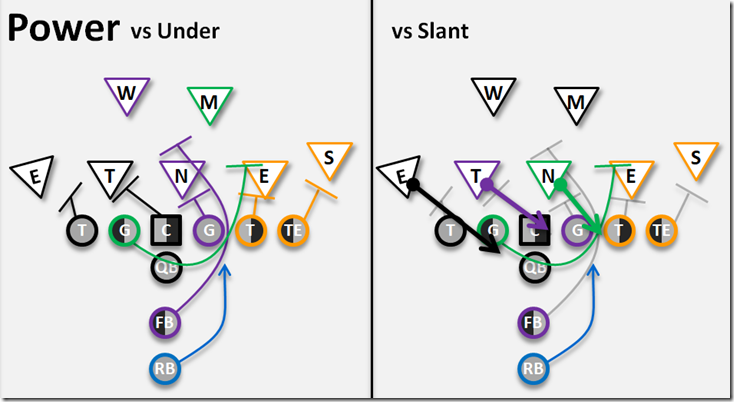
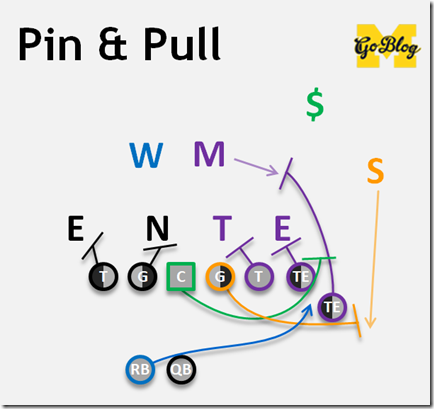
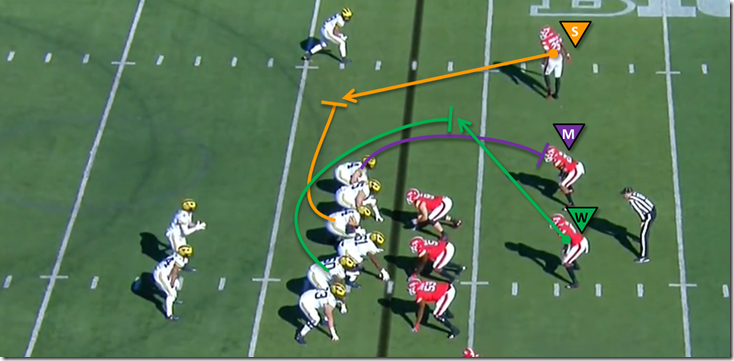
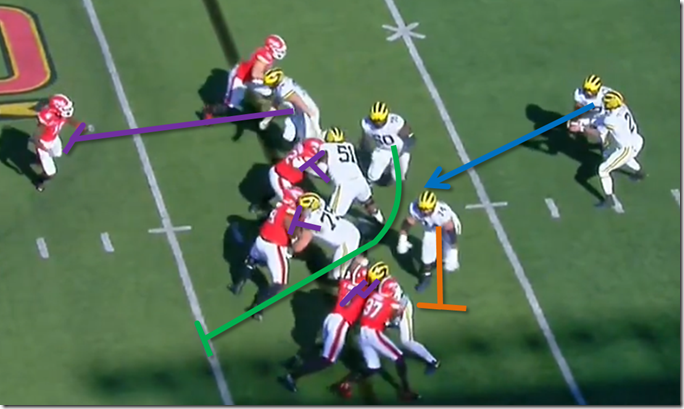


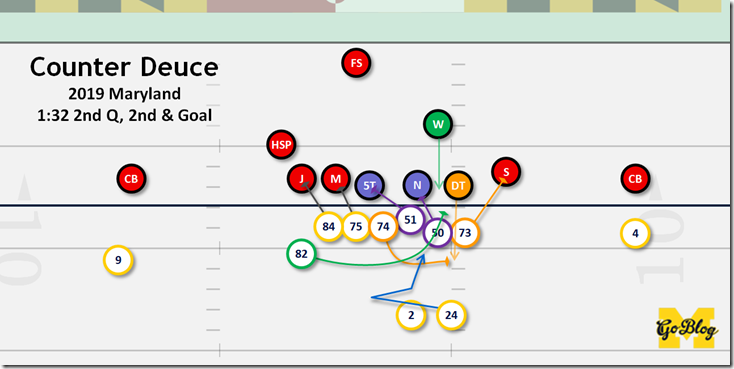

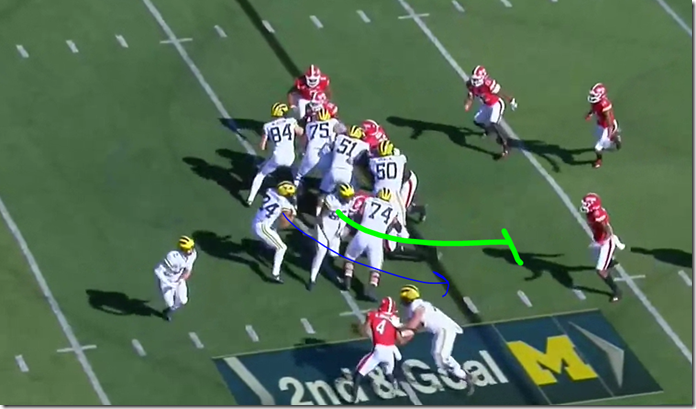


Comments